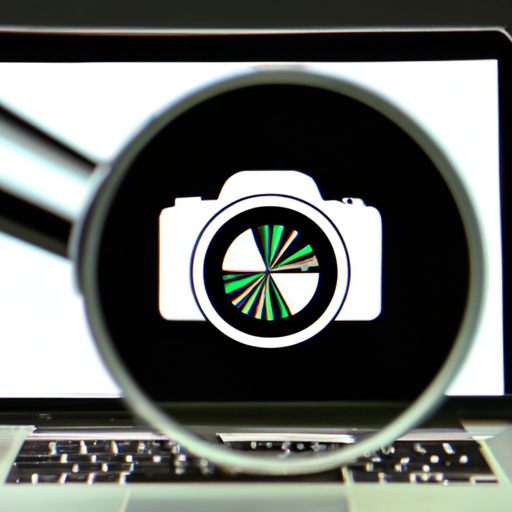How to Protect Your Content from Copyright Infringement: A Guide for Content Creators
As a content creator, you know how important it is to protect your work from copyright infringement. After all, your content is your livelihood, and you want to make sure it’s safe from any unauthorized use.
Fortunately, there are a few steps you can take to protect your content from copyright infringement. Here’s a guide to help you get started:
1. Register Your Content with the U.S. Copyright Office.
Registering your content with the U.S. Copyright Office is one of the best ways to protect it from copyright infringement. This will give you the legal right to take action against anyone who uses your content without your permission.
2. Use a Copyright Notice.
Adding a copyright notice to your content is another great way to protect it from copyright infringement. This will let people know that your content is protected by copyright law and that they need your permission to use it.
3. Use a Creative Commons License.
If you want to allow people to use your content, but still maintain some control over how it’s used, you can use a Creative Commons license. This will let you specify how people can use your content, such as whether they can modify it or use it for commercial purposes.
4. Monitor Your Content.
Monitoring your content is another important step in protecting it from copyright infringement. You can use tools like Google Alerts to help you keep track of any unauthorized use of your content.
5. Take Action Against Infringers.
If you find someone using your content without your permission, you should take action against them. This could include sending them a cease and desist letter or filing a lawsuit.
By following these steps, you can help protect your content from copyright infringement. Remember, your content is valuable, and you should take steps to protect it.
Understanding the Basics of Copyright Law and How It Applies to Your Content
Welcome! Understanding copyright law can be a daunting task, but it doesn’t have to be. In this article, we’ll cover the basics of copyright law and how it applies to your content.
Copyright law is a set of laws that protect the rights of creators of original works. This includes literary, dramatic, musical, and artistic works, as well as sound recordings, films, and broadcasts. Copyright law gives creators the exclusive right to reproduce, distribute, perform, and display their work.
When you create something original, you automatically own the copyright to it. This means that you have the exclusive right to reproduce, distribute, perform, and display your work. You can also license or transfer your copyright to someone else.
It’s important to note that copyright law does not protect ideas, only the expression of those ideas. For example, if you write a book about a magical world, the copyright law will protect your book, but not the idea of a magical world.
When it comes to your content, it’s important to remember that you own the copyright to it. This means that you have the exclusive right to reproduce, distribute, perform, and display your work. You can also license or transfer your copyright to someone else.
It’s also important to remember that copyright law does not protect ideas, only the expression of those ideas. This means that if someone else creates something similar to your work, they may not be infringing on your copyright.
Finally, it’s important to remember that copyright law does not protect facts or ideas that are in the public domain. This means that anyone can use facts or ideas that are in the public domain without infringing on your copyright.
We hope this article has helped you understand the basics of copyright law and how it applies to your content. If you have any questions or need more information, please don’t hesitate to contact us.
How to Use SEO to Protect Your Content from Plagiarism

Protecting your content from plagiarism is an important part of maintaining your online presence. Fortunately, there are a few simple steps you can take to ensure that your content is safe from plagiarism.
1. Use SEO to Optimize Your Content: Search engine optimization (SEO) is a great way to make sure your content is easily found online. By optimizing your content with keywords and phrases, you can make sure that your content is more likely to appear in search engine results. This will make it more difficult for someone to copy your content without being noticed.
2. Include a Copyright Notice: Adding a copyright notice to your content is a great way to make sure that people know that your content is protected. This will also make it easier for you to take legal action if someone does plagiarize your work.
3. Monitor Your Content: It’s important to keep an eye on your content to make sure that it isn’t being plagiarized. You can use tools like Copyscape to search for copies of your content online. If you find any, you can take the necessary steps to have it removed.
4. Use a Digital Watermark: A digital watermark is a great way to protect your content from plagiarism. By adding a watermark to your content, you can make sure that it is easily identifiable and that it can’t be used without your permission.
By following these steps, you can make sure that your content is safe from plagiarism. SEO, copyright notices, monitoring, and digital watermarks are all great ways to protect your content and ensure that it is not stolen or misused.
The Benefits of Registering Your Content with the U.S. Copyright Office
Registering your content with the U.S. Copyright Office is a great way to protect your creative work. It provides you with a number of benefits that can help you protect your rights and ensure that your work is respected. Here are some of the benefits of registering your content with the U.S. Copyright Office:
1. Legal Protection: Registering your content with the U.S. Copyright Office provides you with legal protection. It gives you the right to sue for copyright infringement and to seek damages if someone uses your work without your permission.
2. Public Record: Registering your content with the U.S. Copyright Office creates a public record of your work. This can be helpful if you ever need to prove that you are the original creator of the work.
3. Statutory Damages: If you register your content with the U.S. Copyright Office before an infringement occurs, you may be eligible for statutory damages. This means that you can receive a set amount of money for each infringement, regardless of the actual damages you suffered.
4. Increased Value: Registering your content with the U.S. Copyright Office can increase the value of your work. It shows potential buyers and licensees that you are serious about protecting your rights and that you are willing to take legal action if necessary.
Registering your content with the U.S. Copyright Office is a great way to protect your creative work and ensure that it is respected. It provides you with legal protection, creates a public record of your work, and can even increase the value of your work. So, if you’re looking to protect your rights and ensure that your work is respected, registering your content with the U.S. Copyright Office is a great option.
How to Use Digital Rights Management to Protect Your Content from Unauthorized Use
Digital Rights Management (DRM) is a technology that helps protect your content from unauthorized use. It works by encrypting your content and then controlling access to it. This means that only those who have permission to view or use the content can do so.
Here are some tips on how to use DRM to protect your content:
1. Use a DRM system. There are many different DRM systems available, so make sure to choose one that meets your needs. Look for a system that offers encryption, access control, and other features that will help protect your content.
2. Set up user accounts. Create user accounts for those who need access to your content. This will help you control who can view or use the content.
3. Set up access levels. You can set up different levels of access for different users. For example, you can give some users full access to the content, while others may only be able to view certain parts of it.
4. Monitor usage. Keep track of who is accessing your content and how often. This will help you identify any unauthorized use.
5. Use watermarking. Watermarking is a way to add a unique identifier to your content. This will help you track down any unauthorized copies of your content.
By using DRM, you can protect your content from unauthorized use. It’s important to remember that no system is foolproof, so it’s important to stay vigilant and monitor your content for any signs of misuse.
